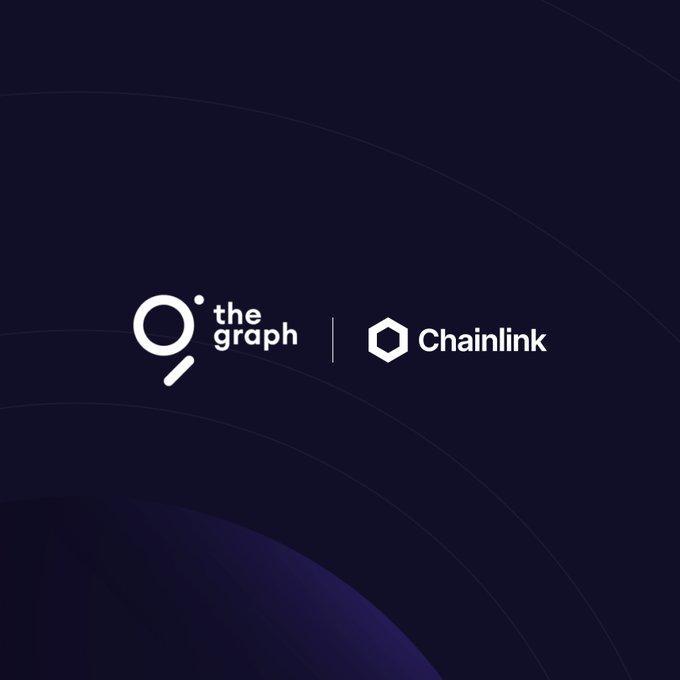The Graph is implementing Chainlink's CCIP to enable GRT token functionality across multiple chains including Arbitrum, Base, and Solana.
Key features:
- Secure cross-chain GRT transfers
- Reduced delegation fees
- Streamlined developer access
- Enhanced staking infrastructure
Future possibilities:
- Native GRT payments
- Cross-L2 delegation and staking
- Expanded cross-chain capabilities
This integration advances The Graph's mission of making decentralized data universally accessible across web3 networks.
ICYMI: $GRT is going cross-chain ⚡ The Graph to adopt @chainlink CCIP to make GRT accessible across @Arbitrum, @Base, and @Solana. Here’s what it unlocks 👇 • Secure GRT transfer across chains. • Easier delegation with lower fees. • Simpler dev access to GRT for dapps. •
The Graph (@graphprotocol), a blockchain data platform that has served over 1.2 trillion requests, is adopting Chainlink CCIP and making its native token GRT a Cross-Chain Token (CCT). Users will be able to transfer the $1B+ market cap token across @arbitrum, @base, and @solana.
GRT is going cross-chain ⚡️ The Graph to adopt @chainlink CCIP to make $GRT accessible across @Arbitrum, @Base, and @Solana. Here’s what it unlocks 👇
The Graph (@graphprotocol), a blockchain data platform that has served over 1.2 trillion requests, is adopting Chainlink CCIP and making its native token GRT a Cross-Chain Token (CCT). Users will be able to transfer the $1B+ market cap token across @arbitrum, @base, and @solana.
🔗 Graph Protocol Update
The Graph protocol has released new developments in blockchain data indexing and organization. Key improvements focus on enhanced query performance and expanded network capabilities. **Main Updates:** - Improved indexing efficiency for faster data retrieval - Enhanced subgraph deployment processes - Network expansion to support additional blockchain protocols These changes aim to streamline how developers access and organize blockchain data across different networks. The updates build on previous improvements from August that enhanced the protocol's core infrastructure. Developers can expect better performance when querying blockchain data through The Graph's decentralized network.
**Developer Flow State Disrupted by Blockchain Data Indexing Delays**
Blockchain developers are losing productivity due to **slow data indexing processes** that interrupt their workflow. - Traditional indexing creates significant delays between data requests and availability - Developers must wait for blockchain data to be processed before continuing work - **Flow state** - the optimal mental zone for coding - gets broken by these interruptions The core issue: blockchain data isn't immediately accessible when developers need it most. **Recent developments** highlight growing frustration: - Multiple blockchain networks require separate indexing approaches - Each new chain introduces fresh indexing complications - Developers want blockchain data to function like traditional databases The industry is exploring solutions for **instant data access** and local-first development environments that would eliminate these workflow disruptions.
**The Graph's Token API Beta: 24x Performance Boost**
The Graph's core development team at Pinax Network built their **Token API Beta in just weeks** using Substreams technology. Key performance improvements: - **24x faster access** to wallet balances - Accelerated token price retrieval - Enhanced NFT data processing Substreams transformed what was previously a **multi-chain indexing bottleneck** into a high-performance data pipeline. This represents a significant leap from traditional blockchain indexing methods. The technology leverages **direct blockchain node connections** and parallel processing, moving beyond the limitations of standard RPC calls that most indexing solutions rely on. [Read the full case study](thegraph.com/blog/case-study)
The Graph Network Reaches 14,000 Open Source Subgraphs
**The Graph Network has reached a milestone of 14,000 live subgraphs**, establishing itself as the standard for querying blockchain data. **Key highlights:** - All subgraphs are **open source** and ready to query - No gatekeeping - instant access to blockchain insights - Powers dapps with decentralized data **2025 expansion includes support for:** - Soneium, Solana, Abstract Chain - Unichain, Monad, Tron - Many other networks This growth represents significant progress from 11,000 subgraphs earlier this year. The Graph continues building the **data layer for web3**, making onchain data accessible through familiar standards regardless of blockchain. Developers can now access more networks than ever through Subgraphs, Substreams, and the Token API.
The Graph Token API Beta Launches Spam & Scam Filtering

**The Graph Token API Beta** has launched its spam and scam filtering feature, automatically protecting users from malicious content. **What gets filtered:** - Junk tokens - Airdrop spam - Malicious NFTs **Benefits for developers:** - **Safer user experience** - Users protected from scams - **Cleaner wallets** - No more cluttered interfaces - **Smarter apps** - Built with trusted, verified data The filtering happens automatically, requiring no extra effort from developers. This builds on previous releases that introduced spam/scam scoring v0.1.0 across Ethereum and Base networks. Developers can now build applications with confidence, knowing their users won't encounter malicious tokens or NFTs through the API. [Get started with Token API Beta](https://thegraph.com/token-api/)
